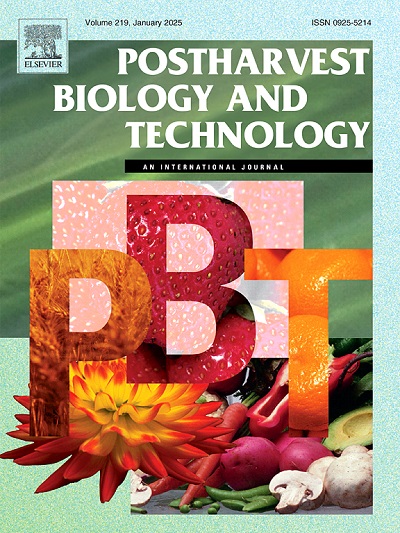Changes in cell wall characteristics and expression of MiERF12, MiERF109-like, and MiERF113 during mango softening
IF 6.4
1区 农林科学
Q1 AGRONOMY
引用次数: 0
Abstract
Mango fruit softening is the primary reason for the reduction in shelf life and the subsequent decrease in market value. In this study, we investigated the roles of ethylene response factor (ERF) in regulating mango fruit softening in response to 1-methylcyclopropene (1-MCP) and ethylene (ETH) treatments was investigated. The action mechanism of the cellular microstructure, key structural components of the cell wall, cell wall metabolizing enzymes, and the ERF were evaluated. Results showed that mango softening was induced by ETH and inhibited by 1-MCP. ETH treatment caused cellular microstructural changes, including cell wall thinning and distortion, while 1-MCP treatment preserved cell wall integrity. Biochemical and molecular assays indicated that 1-MCP and ETH regulated fruit softening by altering cell wall polysaccharide fractions, cell wall degrading enzyme activities (pectate lyase, pectin methylesterase, β-galactosidase, cellulase) and their gene expression (MiPLY8, MiPME3, Miβ-CAL, MiPG2). Meanwhile, ETH strongly induced the expression of MiERF12, MiERF021-like, MiERF109-like, and MiERF113. Virus-induced gene silencing (VIGS) results indicated MiERF109-like and MiERF113 promoted mango fruit softening, whereas MiERF12 inhibited softening. These findings emphasize that MiERF12, MiERF109-like and MiERF113 could play an important role in regulating postharvest ripening and softening of mango, and clarify the potential association of ERFs with cell wall metabolism and structure in mango.
求助全文
约1分钟内获得全文
求助全文
来源期刊

Postharvest Biology and Technology
农林科学-农艺学
CiteScore
12.00
自引率
11.40%
发文量
309
审稿时长
38 days
期刊介绍:
The journal is devoted exclusively to the publication of original papers, review articles and frontiers articles on biological and technological postharvest research. This includes the areas of postharvest storage, treatments and underpinning mechanisms, quality evaluation, packaging, handling and distribution of fresh horticultural crops including fruit, vegetables, flowers and nuts, but excluding grains, seeds and forages.
Papers reporting novel insights from fundamental and interdisciplinary research will be particularly encouraged. These disciplines include systems biology, bioinformatics, entomology, plant physiology, plant pathology, (bio)chemistry, engineering, modelling, and technologies for nondestructive testing.
Manuscripts on fresh food crops that will be further processed after postharvest storage, or on food processes beyond refrigeration, packaging and minimal processing will not be considered.
 求助内容:
求助内容: 应助结果提醒方式:
应助结果提醒方式:


